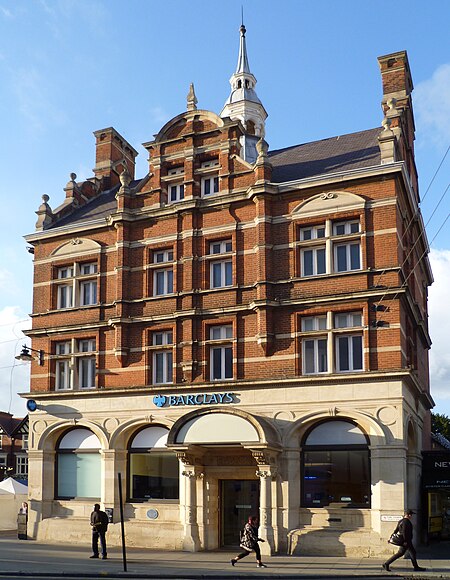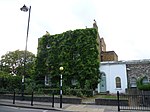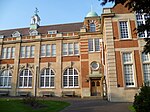Barclays Bank, Enfield

Barclays Bank, at 20 The Town, Enfield, formerly the London and Provincial Bank, is a Grade II listed building in the London Borough of Enfield. It was designed by William Gillbee Scott in a Flemish Renaissance style and completed in 1897. London and Provincial were taken over by Barclays Bank in 1918. The interior of the building has been greatly altered since 1897. It received an interior redesign in 1919 and the original double-height banking hall has been reduced to one storey. In the mid-twentieth century a block of offices was built at the rear but those are not listed. In 1967, the world's first automatic teller machine (ATM) was installed on the west side of the building and in 2017, a gold-coloured ATM and plaque were installed to mark the spot.
Excerpt from the Wikipedia article Barclays Bank, Enfield (License: CC BY-SA 3.0, Authors, Images).Barclays Bank, Enfield
Market Square, London
Geographical coordinates (GPS) Address Nearby Places Show on map
Geographical coordinates (GPS)
| Latitude | Longitude |
|---|---|
| N 51.6523 ° | E -0.08196 ° |
Address
Barclays
Market Square
EN2 6LS London (London Borough of Enfield)
England, United Kingdom
Open on Google Maps










